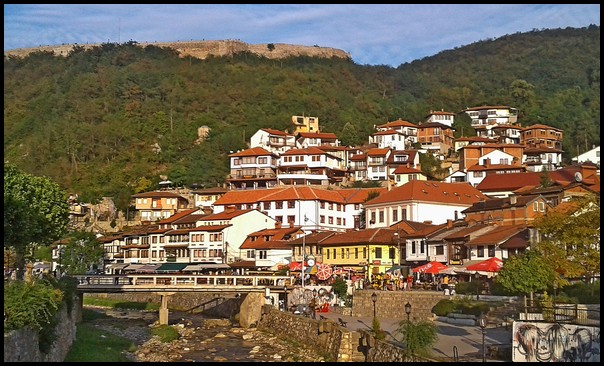 Introduction to Kosovo
Introduction to Kosovo
The Republic of Kosovo is the youngest country in Europe. It gained its independence as a nation for the first time in 2008 after a tense & bitter war over the territory between Serbia and Albanians living in the region (more on that later).
It must be noted that not all of the world’s countries recognize Kosovo as an independent nation. Serbia, Russia and a handful of other countries still consider Kosovo to be a part of Serbia, but most other countries do count Kosovo as a nation.
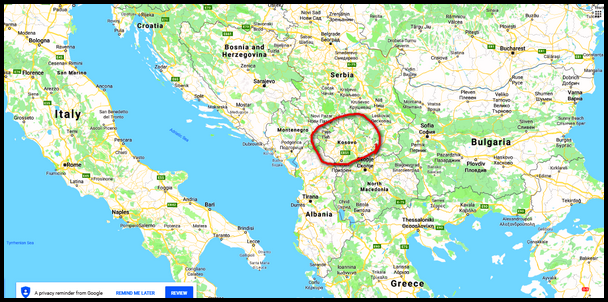 Location and Geography of Kosovo
Location and Geography of Kosovo
Kosovo is a tiny, roughly round, land-locked country in the middle of the Balkan Peninsula. It is surrounded by its Balkan neighbors – Serbia to the north and east, Macedonia to the south and Albania to the west. High mountains along most of its borders separate Kosovo from these other countries.
Over all, Kosovo’s geography consists of flat plains, which are used extensively for agriculture. Flat lands do give way to low rolling hills in some areas, which are also used primarily for farming.
This basically round, flat bowl of land is ringed by rather high and rugged mountains, which make natural boundaries between its neighboring countries.
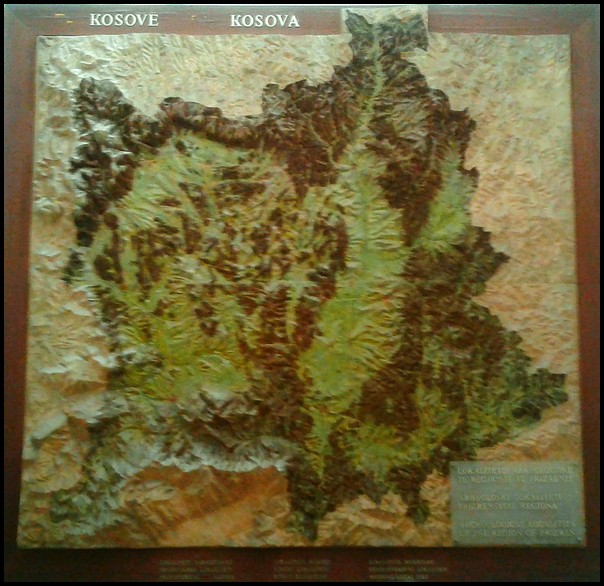 During my travels around Kosovo, I entered & exited the country twice. The first time was actually an unplanned and unexpected day-trip through Kosovo.
During my travels around Kosovo, I entered & exited the country twice. The first time was actually an unplanned and unexpected day-trip through Kosovo.
In July I was hiking for several days in beautiful Valbona Valley in northern Albania. From there I wanted to go to Tirana, Albania’s capital city. Much to my surprise, the bus from Valbona to Tirana passes through the western territory of Kosovo for half of its journey!
At the border, I was quite surprised that we passengers did not need to get off the bus to pass through immigration or even get our passports stamped. Instead, an immigration officer boarded the bus, looked at each passenger’s identification card/passport, then got off the bus. Finished.
But I was even more surprised at the stark change in topography. Northern Albania is extremely mountainous. But as soon as we crossed the border and entered Kosovo, literally within minutes we were passing through pancake-flat fields with farm equipment stores and scattered country homes.
The flat scenery surrounded us for our entire 2-hour drive through Kosovo.
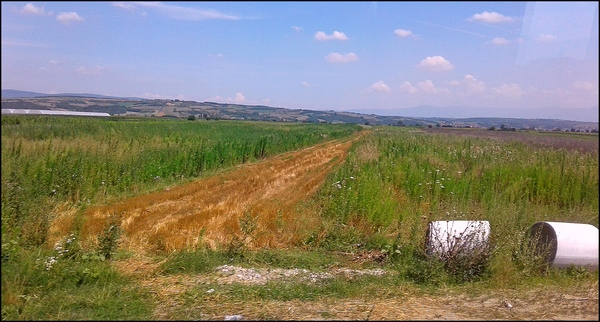 Then, as soon as we crossed a second border back into Albania, again within just minutes we were suddenly driving through a dramatic canyon lined by soaring rocky mountain ranges!
Then, as soon as we crossed a second border back into Albania, again within just minutes we were suddenly driving through a dramatic canyon lined by soaring rocky mountain ranges!
I don’t think I’ve ever seen such a dramatic difference in topography between any two nations in all my travels! In fact, usually there’s not much difference at all between the geography on either side of two national borders.
Needless to say, my impression of Kosovo was that it’s entirely flat.
About one month later, when I finally visited Kosovo to explore the country, I took a bus from Skopje, Macedonia. Again, the entire drive through Kosovo to the captial city of Pristina consisted of flat farmlands and some very low rolling hills.
For over two weeks I traveled around a good portion of Kosovo by bus. Every single trip was through flat agricultural lands and some minor rolling hills.
The scenery is pretty, but I much prefer really dramatic topography, like the high mountains and river canyons of Montenegro and Albania. Thus Kosovo’s natural areas were rather a disapointment to me after enjoying the great outdoors in Montenegro and Albania.
One very unfortunate thing I noticed about Kosovo is that nearly all the rivers and streams are incredibly polluted. In fact, they are so horribly degraded that the water looks like heavy, thick gray liquid of some sort that stinks to high heaven. I could smell the awful stench from one or two blocks away!
What made this even more astounding and in-explicable is that Kosovo’s neighboring countries of Albania and Montenegro have some of the clearest rivers, lakes and seashores that I’ve ever seen in my life (rivalling natural waters in New Zealand). So this was one major difference I noted between Kosovo and other Balkan countries.
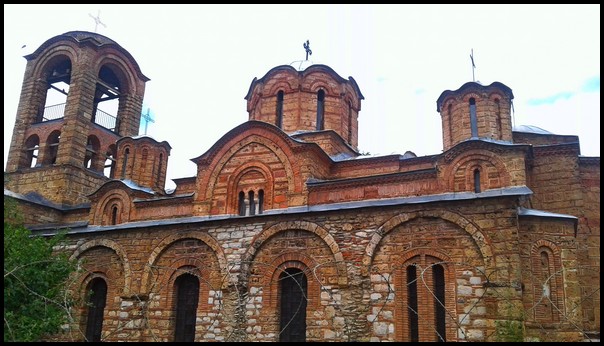 Brief Ancient History of Kosovo
Brief Ancient History of Kosovo
Like Kosovo’s Balkan neighbors, this region of the world was dominated by several very different tribes and kingdoms over the centuries.
Going back to 700s BC, the first-known inhabitants were the Illyrians. They consisted of many different tribes that occupied the areas now known as Macedonia, Kosovo, Albania and Montenegro. At one point, the Illyrians had their capital in northern Montenegro, but a stronghold was always in Albania.
Today most Albanians consider themselves descendents of the Illyrians. The Illyrians (and later Albanians) also have a long history in the area now called Kosovo.
Eventually the Illyrians were conquered by the Romans. Later, the Roman Empire was divided into two sub-Empires, with the eastern part known as Byzantine Empire. The regions now known as Kosovo and Macedonia were within the Byzantine Empire. Throughout both countries today, many distinctly-designed Byzantine churches are found in cities and towns.
Later conquerors included the Greeks, the Serbs and the Turkish Ottoman Empire, which ruled the entire region for over 500 years – from the 1400s to early 1900s. The Turks brought Islam and mosques to the region, which most Albanians adopted.
The Ottomans started being ousted from these territories in the early 1900s, with the original inhabitants finally gaining their indepence from the long Turkish rule.
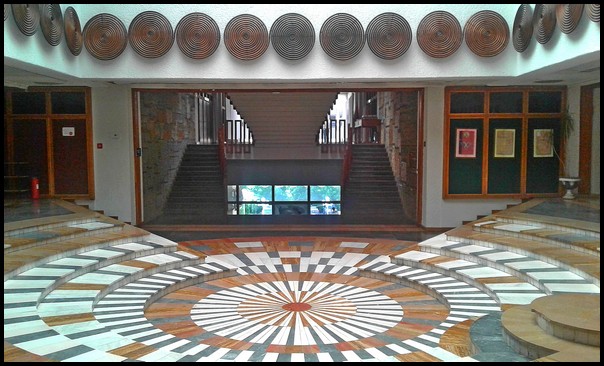 Recent History of Kosovo
Recent History of Kosovo
The two World Wars drastically changed the Balkan peninsula, creating new countries and borders that didn’t formerly exist. A huge change that came after WWII was the creation of the communist Republic of Yugoslavia, which covered most of the Balkan Peninsula. Yugoslavia existed until the fall of the USSR in 1991.
When Yugoslavia was dissolved in 1991, most of the former states within the country became individual countries, including Croatia, Serbia, Montenegro, Macedonia. (Albania, however, was never part of Yugoslavia and had been an independent country since before the world wars)
The area now known as Kosovo at that time was part of Serbia. However, at least 50% of the population were Albanians. During the 1990s the Albanian Islamic population continued growing while the Serbian, mostly Orthodox, population decreased. Eventually 80% of the people living in Kosovo were Albanian Muslims.
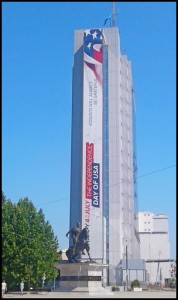 In the late 1990s a bitter war ensued between the Serbians and Albanians living in Kosovo. The UN stepped in to bring about a truce and the result was the creation of the independent Republic of Kosovo.
In the late 1990s a bitter war ensued between the Serbians and Albanians living in Kosovo. The UN stepped in to bring about a truce and the result was the creation of the independent Republic of Kosovo.
This was supported, in great part, by the USA under President Clinton. As a result, Kosovans are huge fans of the USA in general, and of Bill Clinton in particular.
In the capital city of Pristina, there are many memorials to important Americans in the region. There’s a famous Bill Clinton statue and Robert Dole Avenue (although it’s mistakenly spelled ‘Robert Doll’). Also, quite amusingly, many dress shops near the Clinton statue are named ‘Hillary’ !
Pristina is the only place in the world that I’ve ever seen a sign congratualting the USA for its independence day on Fourth of July!
Travel in Kosovo
Logistics / Safety / General Info
Kosovo is a safe and welcoming place for international travelers. Because of Kosovans’ affinity to the US, Americans are especially warmly greeted.
All levels of accommodation are on offer in major destinations, from budget hostels and inexpensive private rooms on up to international-standard 5-star hotels.
Roads in Kosovo are mostly in excellent condition, in great part thanks to UN and EU assistance. There’s also an excellent, regular bus service between all destinations around the coutntry, so Kosovo is easy to get around as an independent traveler.
Kosovo uses the Euro for currency. Food is very inexpensive and tasty. The cities, particularly Pristina, are modern, with shopping malls, designer boutiques and international restaurants.
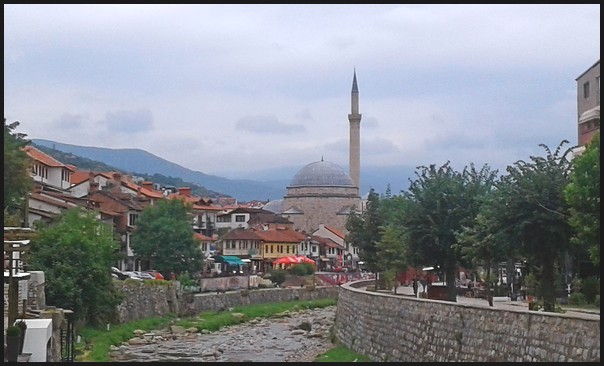 Things to see and do in Kosovo
Things to see and do in Kosovo
Kosovo offers a handful of interesting destinations and attractions. The best, in my opinion, are sitauted in western Kosovo at the base of the mountains separating the country from Albania.
They include the small historic towns of Prizren, Gjakova and Peje. Each is a well-preserved historic town with cobblestone streets, old stone mosques, orthodox churches and other interesting architecture. But each town is different enough that it could be worth visiting all three, especially for travelers who have the time and particularly enjoy historic towns & architecture.
Pristina, the capital, is not an especially attractive city. It mostly consists of non-descript modern boxy architecture. But it could be worth a day or twoin order to visit the scattered historic churches, mosques and museums. They are all located within walking distance of each other right downtown.
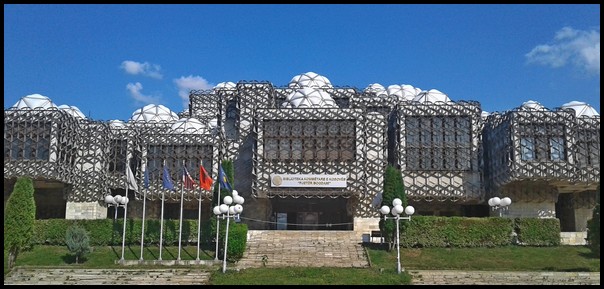 Another point of interest is the Kosovo National Library, often dubbed ‘the ugliest building in the world’! Personally, I completely disagree with that designation, especially after I saw the stunning interiors. (not to mention all the hideously ugly non-descript buildings that form most of the city!)
Another point of interest is the Kosovo National Library, often dubbed ‘the ugliest building in the world’! Personally, I completely disagree with that designation, especially after I saw the stunning interiors. (not to mention all the hideously ugly non-descript buildings that form most of the city!)
Besides the three historic towns in the west, another great destination in Kosovo is the Four Paws Bear Sanctuary, located about 30 minutes from Pristina.
I went there on a day trip from the city and loved it so much that I wrote an entire article about the sanctuary here. I highly encourage any animal lovers to visit this great bear haven, where you’ll learn a lot about bears and get to watch over a dozen bears in a natural setting.
I think most travelers could see all these places in Kosovo in one to two weeks, either by using public buses or a private car.
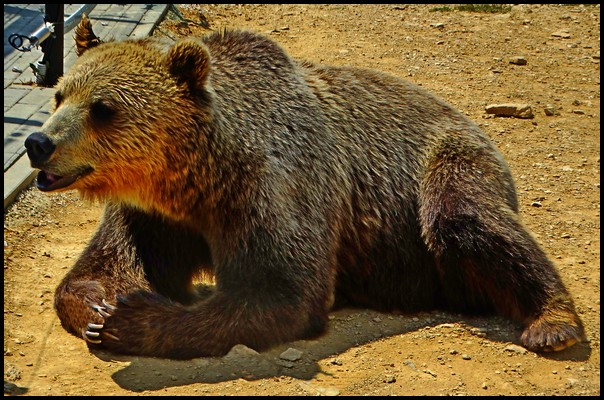 Summary
Summary
The tiny Balkan country of Kosovo is a safe, welcoming place to visit. It doesn’t have the fantastic dramatic mountain scenery of neighboring Montenegro and Albania, but Kosovo has a handful of interesting attractions that could keep travelers busy for one to two weeks. They include three small historic towns, Pristina and Four Paws Bear Sanctuary.
You might also enjoy:
=======================================

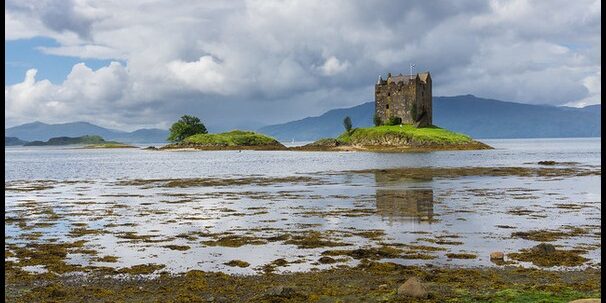
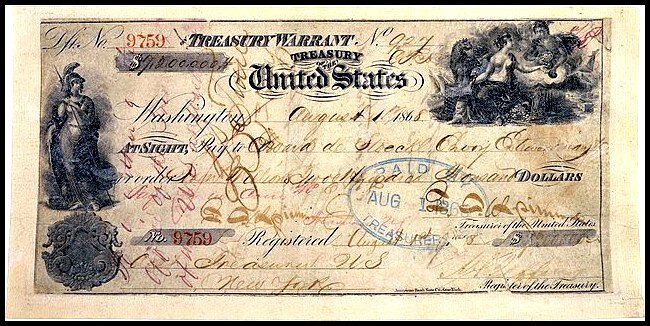
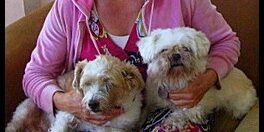
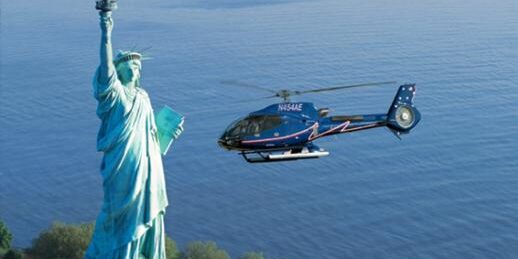
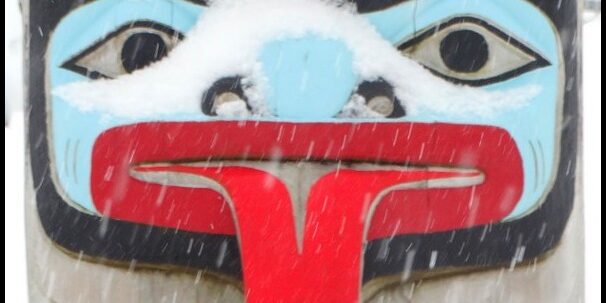

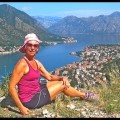
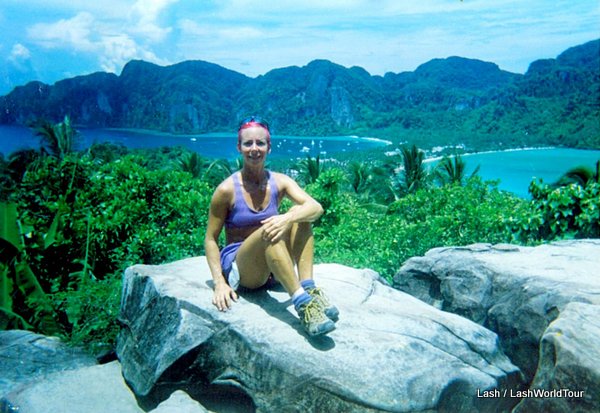
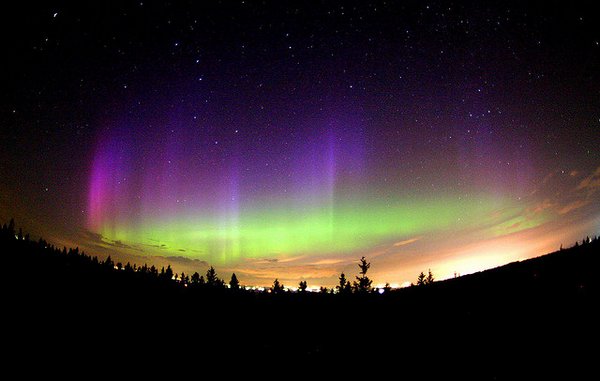
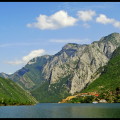

 Hi! I'm Lash, an American nomadic world traveler who's been traveling solo since 1998. I’m passionate about traveling the world nomadically and then sharing it all with you. I hope to inspire you to travel the world, to entertain you with tales from the road, and to help you reach your travel dreams. Welcome!
Hi! I'm Lash, an American nomadic world traveler who's been traveling solo since 1998. I’m passionate about traveling the world nomadically and then sharing it all with you. I hope to inspire you to travel the world, to entertain you with tales from the road, and to help you reach your travel dreams. Welcome! 




4 pings
NEWS: Big Change in my Travel Plans 2019! - LashWorldTour
2019/09/03 at 12:32 am (UTC 8) Link to this comment
[…] « Introduction to Kosovo […]
My First Impressions of Bulgaria
2019/09/09 at 11:21 pm (UTC 8) Link to this comment
[…] My Introduction to Kosovo […]
introduction to romania
2020/08/27 at 7:50 pm (UTC 8) Link to this comment
[…] Introduction to Kosovo […]
KOSOVO: 45 POSTS QUE AYUDAN PARA VIAJAR [1] | Viatges pel Món
2021/03/03 at 4:58 pm (UTC 8) Link to this comment
[…] Introduction to Kosovo | Lash World Tour […]